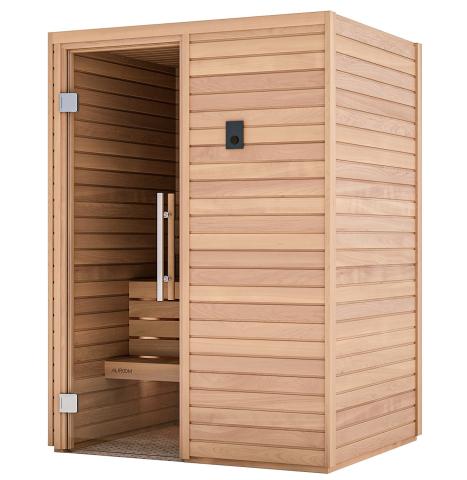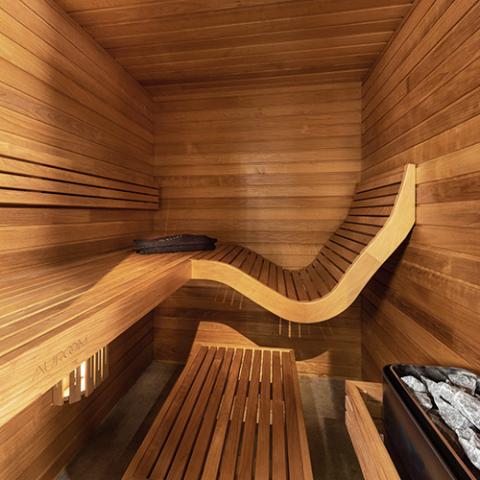Our Traditional Sauna Statements
Our Traditional Sauna Statements
Blog Article
Traditional Sauna Fundamentals Explained
Table of ContentsNot known Details About Traditional Sauna The Best Guide To Traditional SaunaHow Traditional Sauna can Save You Time, Stress, and Money.Our Traditional Sauna Ideas
A lot of the weight shed in a sauna is water loss and is re-gained upon rehydrating. Without a question sauna can be an essential part of a healthy and balanced weight loss program. To look at the differences between conventional and IR saunas, I will separate these into verifiable, academic, and made distinctions.Therefore, the most popular point in the saunawhich goes to the ceiling straight over the sauna heateris generally in between 185 and 190 F. Traditional Sauna. Claims that a conventional sauna surpasses 200 F is simply not true and not relevant for electric saunas sold in the United States. The temperature for a far-infrared sauna is normally established between 120 and 140 F; however, unlike the typical sauna, the objective in and IR space is not to accomplish a high temperature
Due to the fact that of this, the temperature distinction is practically unimportant, given that extreme sweating causes both sauna kinds, however the approach of warming the body is different. In an IR sauna the bather will certainly feel hot and will certainly sweat a lot, however at much reduced temperatures. Hence, if the goal is to invest longer periods of time in the sauna, the IR sauna is a good selection.

Traditional Sauna - Truths
When the heat is attained, the components cycle on and off to maintain the high temperature level. Many typical sauna users appreciate putting water over the rocks to create vapor to elevate sauna moisture levels. The benefits of putting water over the rocks consist of: making the room much more comfy, moistening the nasal flows, and enabling the use of aromatherapy by mixing crucial oils with the water.
In a far-infrared sauna, the warm waves pass through the body to effectively heat up the body and raise the body core temperature. To attain this increased temperature, Far-infrared emitters create infrared power which is close to the very same wavelength as that which the body normally emitsoften referred to as the "Crucial Range" of 7 to 14 microns), so the energy is well received by the body.
When the energy gets in the body, it creates the body temperature to boost and eventually causes sweating. In an infrared sauna it is essential for the emitters/heaters to remain on virtually frequently. Given that there is no mass of rocks to maintain warmth, the sauna will certainly cool down if the emitters turned off.
As pointed out above, the sauna bather in an infrared area intends to position himself before running emitters to get maximum take advantage of the warmth. The home heating time for both areas can be extremely various, depending upon exactly how the rooms are made use of. For a conventional sauna, a bather needs to permit 30-40 minutes for the room to achieve a wanted temperature level and to appropriately pre-heat the rocks.
The Ultimate Guide To Traditional Sauna
A well constructed sauna will usually achieve a temperature of 150-160 F in about 30-40 mins (Traditional Sauna). For hotter temperature levels, the room might need to heat for a longer period. As soon as the room accomplishes set temperature level, visit our website the heater will cycle on and off, usually operating regarding 50% of the moment. The insulated wall surfaces and the heated rocks will certainly maintain the space warm and at stable temperature levels.
To some, 15 mins was "thrown away" while the infrared power heated the timber panels instead than heating a body, while others locate a pre-heated space to be much more comfortable and believe an elevated starting temperature is necessary to begin sweating. The length of recommended use for each and every space is approximately the same (10-15 mins per session); nonetheless, as a result of the reduced air temperatures and the ability to feel the impacts of infrared heat quicker than a conventional sauna, it is not uncommon for an individual to spend a total of 20-30 minutes in an infrared sauna.
Typical saunas tend to be larger (therefore utilize even more electrical energy) than infrared saunas, although typical saunas are absolutely available in one and two individual sizes too. For a two-person typical sauna, 5x6 or 5x7 size is most popular. The leading bench can comfortably seat two or three people and is also enough time to rest throughout the sauna session.


The typical price per kWH of electrical energy in the U.S. is around $0.11, so a 4.5 kW heating system will certainly set you back about $.50 to run for one hour, if the heater runs continually for one hour. Commonly a sauna heater will run for 75% of the initial hour and 50% of subsequent hours on because the elements cycle once the established temperature is attained.
Fascination About Traditional Sauna
A 2 individual far-infrared space is usually literally smaller sized than a typical sauna, often about 4' x 4' or smaller. The IR home heating system is generally 1.5-1.7 kW using a 120 volt 15 amp plug-in solution. Since the room can be utilized sooner than a sauna area, we will assume the area is used for to of an hour consisting of heat up time.
Lastly, there is a seldom talked about difference in the social experience in between the two spaces. While our culture moved here has actually lost several of the social benefit of the standard sauna experience, it can be really socially satisfying. From family time in the sauna, to heart-felt discussions with considerable others, to sauna partiesthe standard sauna experience can cause intimate socializing.
A lot of higher end infrared areas consist of colored light treatment, sound systems and full-glass fronts. The dimension of most spaces permit 2 people to easily use the room, while some styles might permit a third or fourth person to use the space. Custom-made infrared areas are additionally readily available, with space sizes offered up to dig this 7' x 8' x 7' high.
Report this page